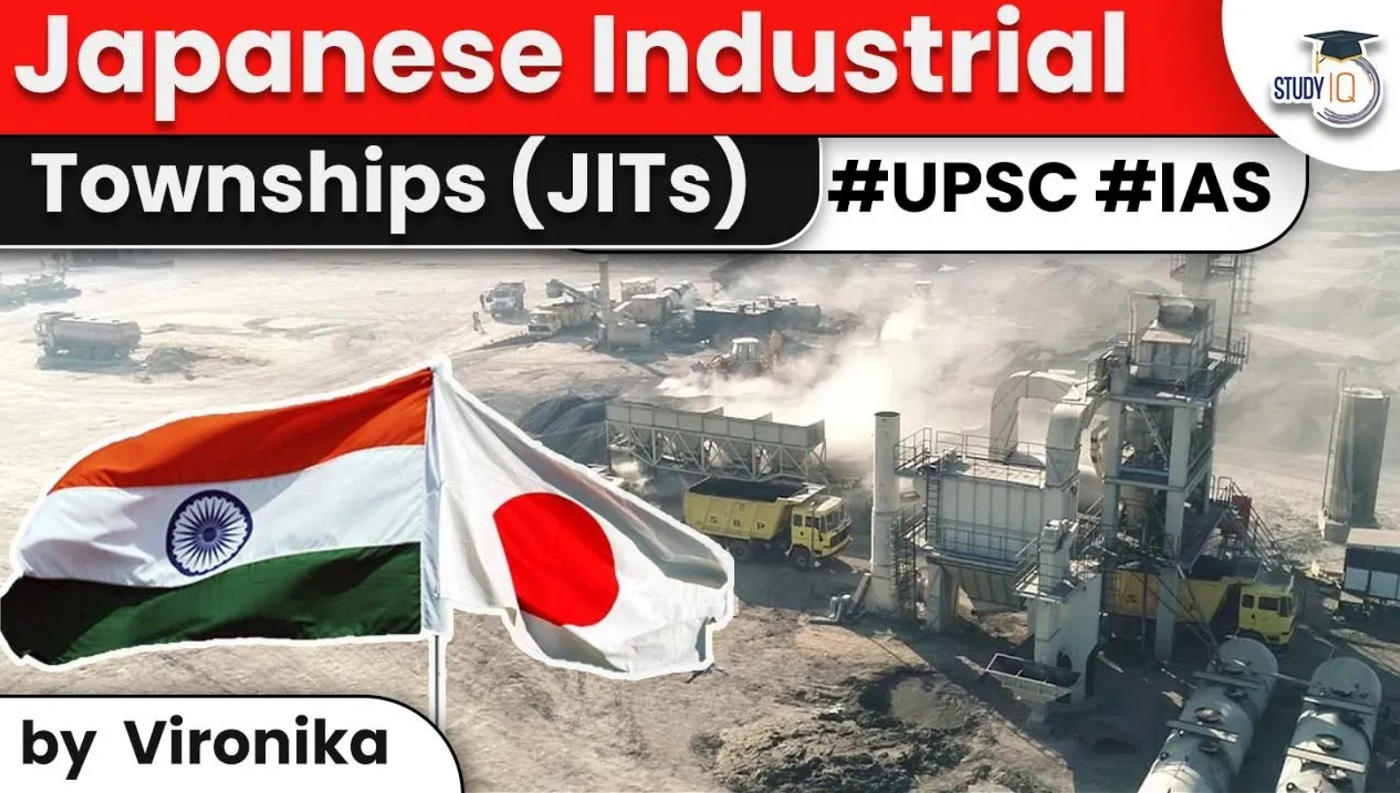Table of Contents
- Japan, India’s fifth-largest investor, has contributed over USD 36.2 billion in cumulative investments since 2000.
- Realising this fact, India’s Department for Promotion of Industry & Internal Trade (DPIIT) and Japan’s Ministry of Economy, Trade and Industry (METI) conducted a joint meeting for the yearly evaluation of progress under the Japanese Industrial Townships (JITs) in India.



- DPIIT and the States showcased the developed land and infrastructure in these townships that are easily available to Japanese investors.
- To entice investment, Japanese businesses were invited to visit the JITs on the ground.
What are JITs?
- The Japan Industrial Townships (JITs) were established under “Action Agenda for India-Japan Investment & Trade Promotion and Asia-Pacific Economic Integration,” signed in April 2015 by METI (Japan) and DPIIT (India).
- This action agenda was signed with the goal of growing Japanese investment in India by building “Japan Industrial Townships” across the country, specifically in the Delhi Mumbai Industrial Corridor (DMIC) and Chennai Bengaluru Industrial Corridor (CBIC) regions.
- Japan is the only country in India with distinct country-focused industrial townships.
- Special Japan desks for translation and facilitation support, world-class infrastructural facilities, plug-and-play facilities, residential clusters, and special incentives for Japanese enterprises are all available in these Japanese Industrial Townships (JITs).
- These townships have ready-to-move-in facilities and completely constructed land available for allotment.
Industrial Townships

- Industrial townships are generally special economic areas where concession in laws and other incentives are provided to private bodies to set up economic units for ease of doing business.
JITs in India
- JITs were established in accordance with the ‘action agenda for the India-Japan investment and trade promotion and Asia-Pacific economic integration which was signed between DPIIT and METI in April 2015 for taking steps towards the development of ‘Japan Industrial Townships’ in the country, specifically in the Delhi-Mumbai Industrial Corridor (DMIC) and Chennai-Bengaluru Industrial Corridor (CBIC) for facilitating Japanese investment in India.
- There are now 114 Japanese firms in the JITs. The majority of Japanese enterprises are located in the industrial townships of Neemrana and Sri City. Daikin, Isuzu, Kobelco, Yamaha Music, Hitachi Automotive, and other well-known Japanese companies have set up factories in these townships.
Key Points of this Joint Meeting
- DPIIT and the States presented developed infrastructure and land readily available for Japanese investors in these townships.
- Japanese companies were invited for field visits to JITs, in order to attract investments.
- DPIIT reviewed the status of JITs with METI, in a virtual platform in light of COVID-19 pandemic.
- From Japanese side, Embassy of Japan in India and Japan External Trade Organization (JETRO) also participated.
- From Indian side, Officers from Ministry of External Affairs, Embassy of India in Tokyo and representatives of Invest India as well as representatives of State Governments took part in meeting.
What is Industrial Corridor?
- An industrial corridor is basically a corridor comprising of multi-modal transport services that would pass through the states as main artery.
- Freight cargo from industrial and National Investment and Manufacturing Zones (NIMZs) located upto a distance of 100-150 km on both sides of this main artery are brought to the industrial corridor via rail and road feeder links that provides last mile connectivity.
- An industrial corridor is basically a corridor comprising of multi-modal transport services that would pass through the states as main artery.
- Freight cargo from industrial and National Investment and Manufacturing Zones (NIMZs) located upto a distance of 100-150 km on both sides of this main artery are brought to the industrial corridor via rail and road feeder links that provides last mile connectivity.
- This will lower costs of logistics and enable firms to focus on their areas of core competence.
- Industrial corridors offer effective integration between industry and infrastructure, leading to overall economic and social development.

Industrial corridors constitute world-class infrastructure, such as:
- High-speed transportation network – rail and road
- Ports with state-of-the-art cargo handling equipment
- Modern airports
- Special economic regions/industrial areas
- Logistic parks/transhipment hubs
- Knowledge parks focused on catering to industrial needs
- Complementary infrastructure such as townships/real estate
- Other urban infrastructure along with enabling policy framework
Question:
Which out of the following sets of industries is not a part of the eight core industries in India?
- Coal, crude oil and natural gas
- Steel, cement and electricity
- Coal, natural gas and refinery products
- Mining, metallurgical operations and pharmaceuticals
Latest Burning Issues | Free PDF

























 WhatsApp
WhatsApp